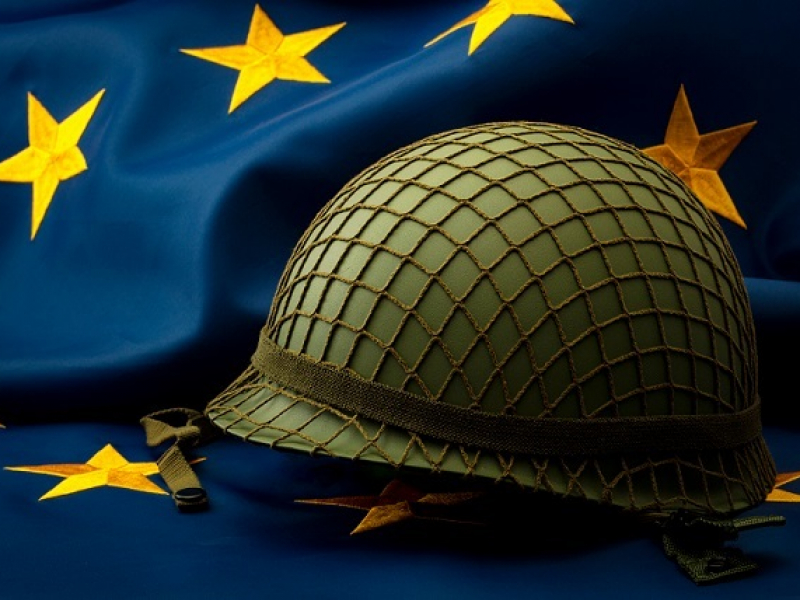Domènec Ruiz Devesa / 25 February 2025
Commentary no. 316
With the emergence of the Trump-Putin axis, Europe is experiencing its most dangerous geopolitical moment since the end of the Second World War. Never before has the need to organise an effective, credible, and non-US dependent common defence of the Old Continent been as urgent and as obvious as it is now. The creation of a new European security order is a precondition for the survival of our democracy, our social model, our economic prosperity, and our global standing.
In the East, the war of aggression launched by the Russian dictator against the democratic and pro-European Ukraine, with the support of China, is entering its third year. A ceasefire on terms unfavourable to Ukraine will jeopardise the security of the EU. In the West, the United States, under an unpredictable president like Trump, is no longer a reliable security partner. Thus, a withdrawal of US armed forces from Europe, or the refusal to provide military assistance to another NATO member in the event of a Russian attack, is now a realistic prospect.
EU leaders should take determined, concrete, and rapid action to establish a Defence Union in accordance with the available provisions of the Treaty of Lisbon. The proposed Union must contain both industrial and military dimensions, including adequate defence planning and deployment capabilities, to guarantee Europe’s civil and military preparedness and territorial defence. It should also include an agreement on its financing and democratic governance.
As regards the industrial dimension of defence, we need to increase the production of standard equipment and develop new military technologies. The inefficient national fragmentation of defence industries, and the internal market exception clause imply gaps or duplication of capabilities, interoperability problems, and foreign dependencies. Initiatives such ASAP, EDIRPA, and EDIP, in line with the priorities identified by the European Defence Agency, go in the right direction, but to strengthen the European Defence Industrial and Technical Base we need no less than 50 per cent of joint research and innovation, joint capability development, and joint procurement of defence equipment made in Europe, with the full inclusion of Ukraine in this effort.
The required financial effort can be catalysed by EU financing, through EU joint borrowing and new own resources, with the EU budget for the research and development dimension and the establishment of an EU Security Bank for the production dimension. However, the exemption for defence investments from the calculation of the Stability and Growth Pact deficit rule must be conditional on investment in joint capabilities and procurement and projects of common interest, such as secure satellite communications or an anti-missile shield, through PESCO, EDA, European Defence Fund, etc.
In terms of defence planning and operational dimensions, the Defence Union should include improved CSDP missions and operations, a strengthened Rapid Deployment Capacity, and a newly established European Defence System. CSDP missions and operations (conducted by definition outside the Union) must also contribute to the territorial defence and security of Europe in our immediate neighbourhood (Western Balkans, Ukraine, Moldova, Caucasus).
The Rapid Deployment Capacity, which is currently an entry force composed of Battle Groups for operations outside the Union, is expected to become operational this year with just 5,000 troops. It should progressively reach the target of 60,000 soldiers agreed in the Helsinki European Council in 1999 and be made permanently available to the EU. Over time, the RDC should become a “28th army” and thus an integral part of the European Defence System, alongside the national armies, which are responsible for territorial defence.
In accordance with Article 42.2 of the Treaty on European Union, the end goal of “the progressive framing of a common Union defence policy” is the establishment of “a common defence”, by a unanimous decision of the European Council, which must be compatible with NATO. Such “common defence”, if established, will ensure the orderly operation of the mutual assistance clause of Article 42.7 TEU in the event of a military aggression against any EU Member State by Russia or any other aggressive power.
The effective implementation of the EDS will require: the conversion of the European Union Military Staff and the Military Planning and Conduct Capability into a fully-fledged EU Military Headquarters (EUMH); the development of a military model, encompassing threat assessments, military assets, war-games and field doctrines; the definition of a Force Model, including the numerical forces required for territorial defence in the event of an EU-only response; and a master plan for continental military mobility, which could be financed by the EU budget.
The Permanent Structured Cooperation on Defence (PESCO) has so far been used mainly for defence industrial projects, but it is the ideal instrument to implement the institutionalisation of a Common Defence, even if unanimity is not reached in the European Council, through deciding by qualified majority to establish a European multinational force under Article 42.6 TEU and Article 1.b of Protocol 10, or more concretely by strengthening the Rapid Deployment Capacity, thus creating a vanguard open to other Member States. PESCO can also be used to communitarise existing forms of military cooperation between some Member States, such as the Eurocorps, which is already compliant with NATO standards.
As regards nuclear deterrence, the best option is the Europeanisation of French capabilities, with their integration into the EDS strategic military planning, and with the contribution of EU Member States to its financing.
The EDS as “European Pillar of NATO” will require: at the political level, a Euro-Atlantic Security Council (EASC) composed of the NATO Secretary General, the EU HRVP, and the Defence Ministers of the EU and NATO Member States; at the strategic level, a coordination protocol between NATO and the EDS, including the exchange of classified information; at the operational level, the use of NATO standards, manuals, force estimates, and alignment with the NATO Defence Planning Process (NDPP). The EDS can therefore be mobilised by the EU in event of NATO’s non-activation. The creation of the EDS will also imply a more balanced transatlantic partnership. The EU’s accession to the North Atlantic Treaty (not the military structure) could also be envisaged.
Finally, it is essential to fully involve the European Parliament in this project to ensure the Defence Union has the necessary political authority and control. This should be achieved through an interim Inter-Institutional Agreement with the European Council, pending a federal reform of the Lisbon Treaty (in accordance with the European Parliament’s proposal of November 2023).
*Former MEP, President of the Union of European Federalists (The author would like to thank Klaus Welle, Giulia Rossolillo, Lieven Taillie, Domenico Moro and Roberto Castaldi for comments received to an earlier version of this article)


 It
It  En
En 


